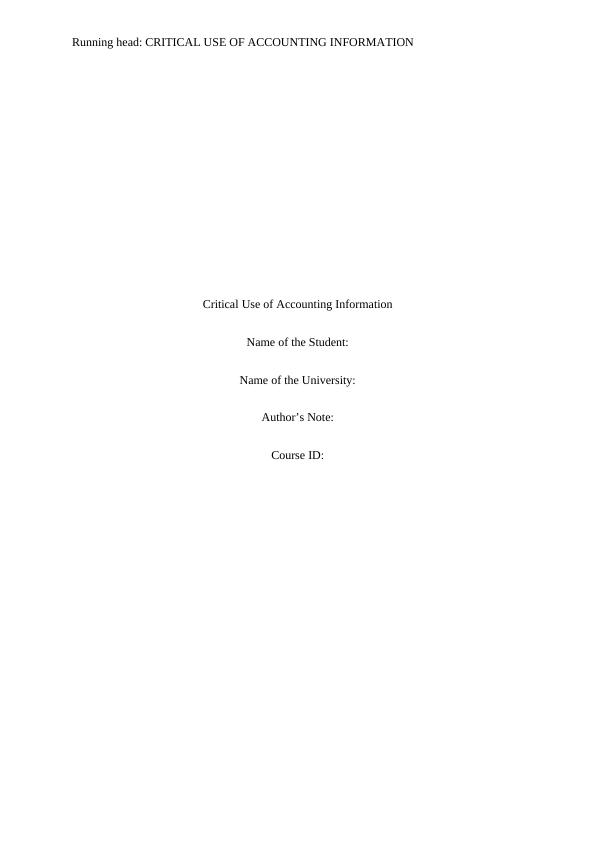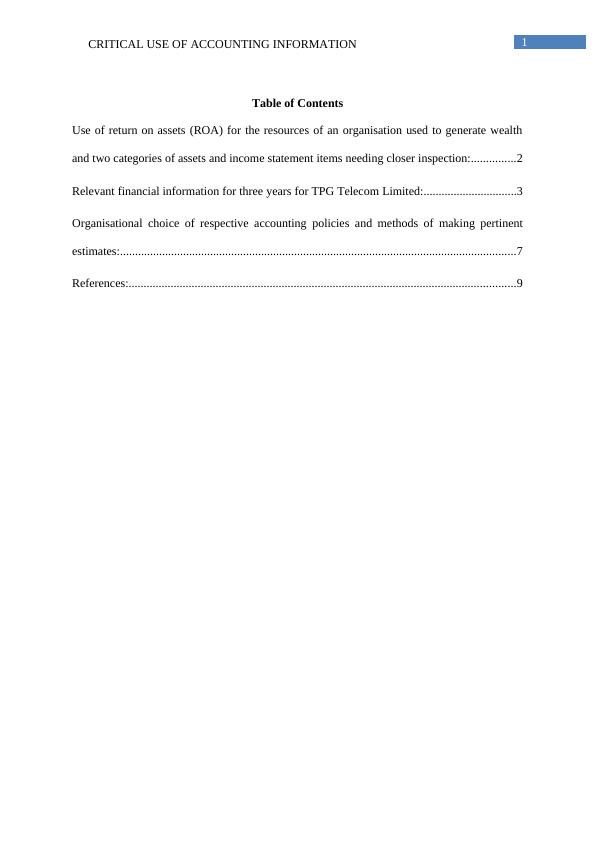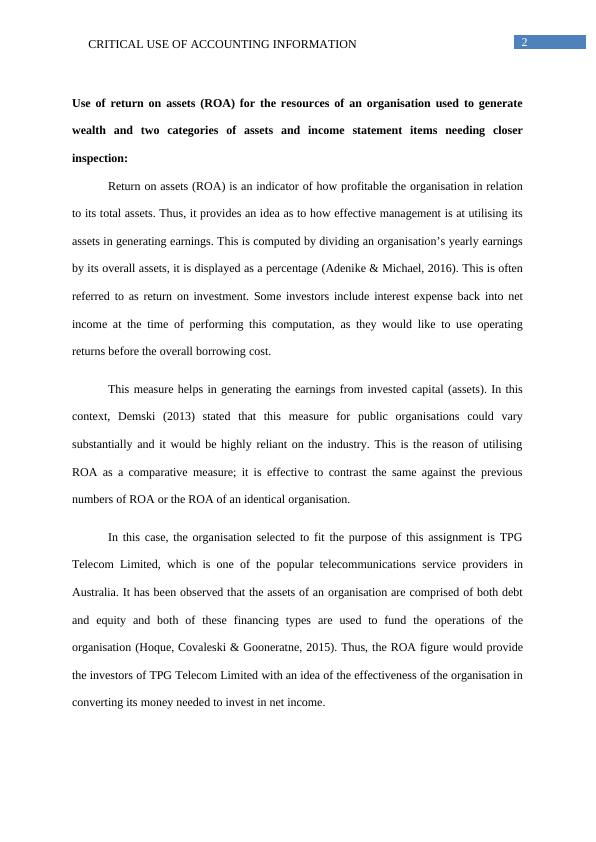ACC/ACF5903 Critical Use of Accounting Information
Added on 2019-10-31
10 Pages1596 Words162 Views
End of preview
Want to access all the pages? Upload your documents or become a member.
Cost Volume Profit Analysis Assignment
|4
|684
|121
Financial Analysis of TPG Telecom Limited
|13
|3693
|46
Critical Use Accounting Information
|11
|2406
|16
Financial Analysis of TPG Telecom Ltd for Investment Recommendation
|17
|3819
|109
ACC/ACF5903 - Critical Use of Accounting Information
|6
|859
|175
Analysis of Performance of Multinational Insurance Company - Desklib
|15
|3940
|124



